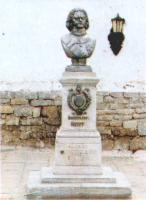 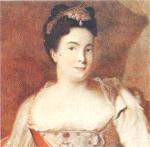 HISTORICAL
LANDMARKS HISTORICAL
LANDMARKS
Yekaterinburg
is 277 years old. Originally designed by the Russian Emperor Peter
the Great as a major industrial and administrative center Yekaterinburg
has been such a center for nearly three centuries.
The glory of the founders of Yekaterinburg is shared by two "fledglings
of Peter's nest", captain Vasily Tatishchev who determined the location
of the plant/fortress, and the engineer and general of artillery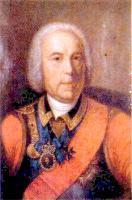 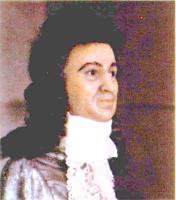 Willim de Gennin who later put the plant into operation.
Willim de Gennin who later put the plant into operation.
On November 7 (18), 1723 two iron forging hammers
were put into operation in the hammer-forging shop of the plant.
This event was registered as the official date of birth of the town
named after the Saint Martyr Catherine (Ekaterina in Russian), the
patroness of mining crafts, and after the reigning empress who had
been baptized Catherine by Russian orthodox church.
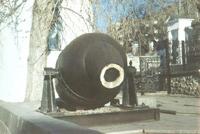 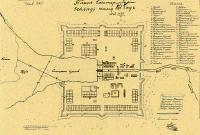 Soon
the Yekaterinburg Metallurgical Works became famous for its high
quality metal both in Russia and around the world. In 1728 a mint
was opened on its territory, which coined Russian money for a century
and a half. A year later a stone-cutting factory was built here,
which brought world fame to Ural precious and semi-precious stones. Soon
the Yekaterinburg Metallurgical Works became famous for its high
quality metal both in Russia and around the world. In 1728 a mint
was opened on its territory, which coined Russian money for a century
and a half. A year later a stone-cutting factory was built here,
which brought world fame to Ural precious and semi-precious stones.
 In the XVIIIth century
the Ural region was a national and world leader in the manufacture
of ferrous metals, producing 4/5th of the total amount of metal
in Russia. In the second quarter of the XIXth century Yekaterinburg
became a major machine engineering center. In the second half of
the XIXth century its plants began to manufacture mining machinery,
metallurgical equipment, and steam engines. The best known manufacturers
were Yates, the brothers Korobeinkikov, and the brothers Berenov. In the XVIIIth century
the Ural region was a national and world leader in the manufacture
of ferrous metals, producing 4/5th of the total amount of metal
in Russia. In the second quarter of the XIXth century Yekaterinburg
became a major machine engineering center. In the second half of
the XIXth century its plants began to manufacture mining machinery,
metallurgical equipment, and steam engines. The best known manufacturers
were Yates, the brothers Korobeinkikov, and the brothers Berenov.
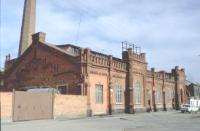 At
first Yekaterinburg belonged to the Tobolsk region. However, in
1781 it was granted the status of a town of within the Perm principality.
In 1783 the Senate approved its coat of arms. The upper part of
the shield in this coat of arms displayed a bear with the New Testament
on its back against the background of red which was to symbolize
that the town belonged to the At
first Yekaterinburg belonged to the Tobolsk region. However, in
1781 it was granted the status of a town of within the Perm principality.
In 1783 the Senate approved its coat of arms. The upper part of
the shield in this coat of arms displayed a bear with the New Testament
on its back against the background of red which was to symbolize
that the town belonged to the 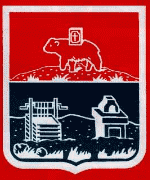 Perm
region, while the lower part showed a silver smelting furnace and
a mine against the background of green which symbolized the abundance
of minerals near the town. In 1807 Yekaterinburg was granted a unique
status of a mining city. It had its own mining courts and mining
police, Catherine's Mining Cathedral, the main mining pharmacy,
and a town garrison directly subordinated to the Head of the Mining
Plants of the Ural Mountain Range. It is only in 1863 that the town
was returned under civilian rule. Perm
region, while the lower part showed a silver smelting furnace and
a mine against the background of green which symbolized the abundance
of minerals near the town. In 1807 Yekaterinburg was granted a unique
status of a mining city. It had its own mining courts and mining
police, Catherine's Mining Cathedral, the main mining pharmacy,
and a town garrison directly subordinated to the Head of the Mining
Plants of the Ural Mountain Range. It is only in 1863 that the town
was returned under civilian rule.
At the same time Yekaterinburg was turning into a center of non-mining
industries and banking business. The discovery of Siberian gold
brought about a fabulous wealth to city and stimulated its growth.
For a long time the mining of this gold was the monopoly of Yekaterinburg
merchants, the Ryazanovs, Rastorguyevs, Balandins, and others.
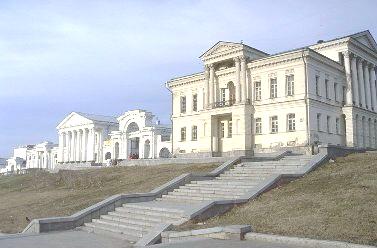 Situated
on the border between Europe and Asia the town played an important
mediating role in trade. Initially one of the parts of the fortress,
and then of the town, was called a Trade part. In 1843 the State
Commercial Bank opened its branch office in Yekaterinburg; the Siberian,
the Volga-Kama, and the City Community Banks began operating here
early in the XXth century. Situated
on the border between Europe and Asia the town played an important
mediating role in trade. Initially one of the parts of the fortress,
and then of the town, was called a Trade part. In 1843 the State
Commercial Bank opened its branch office in Yekaterinburg; the Siberian,
the Volga-Kama, and the City Community Banks began operating here
early in the XXth century.
Despite its provincial character the town was a major cultural
center. It had a mining school, a mining research society, and a
mining museum. 1843 is the year of establishment of the town's first
theater company, for which, four years later, the citizens constructed
a theater building in the Glavny Prospect (High Street). In 1870
the Ural Society of Science Enthusiasts was established whose members
published works about the Ural region and organized expeditions.
The national crisis caused by World War I, the February revolution
and the October upheaval radically changed the fate of the town.
On October 26, 1917 Soviet Power was proclaimed in Yekaterinburg.
Before the civil war Yekaterinburg became a regional center, and
in 1923 it was granted the rights of the center, and in 1923 it
was granted the rights of the administrative center of the newly
established huge Ural region.
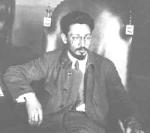 In
1924 the name of Yekaterinburg disappeared from the map of the country.
As the totalitarian regime grew stronger it gave the names of its
leaders to all places, big and small. Thus, Yekaterinburg was renamed
into Sverdlovsk. In 1934 it became the main city of the region bearing
the same name. In
1924 the name of Yekaterinburg disappeared from the map of the country.
As the totalitarian regime grew stronger it gave the names of its
leaders to all places, big and small. Thus, Yekaterinburg was renamed
into Sverdlovsk. In 1934 it became the main city of the region bearing
the same name.
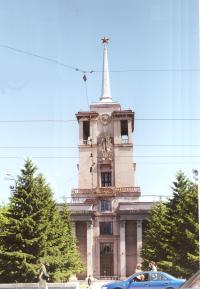 Throughout
the 1920s - 1930s Yekaterinburg preserved its significance as an
industrial and cultural center of the Urals. The construction of
huge plants brought about a threefold increase in its population.
The Sverdlovsk builders constructed dozens of industrial buildings,
blocks of flats, schools, shops and hospitals. In 1925 the city
got its first water supply line and first bus routes. In 1929 the
first tram appeared on its streets and a broadcasting station was
put into operation. High-rise buildings became the sign of the time. Throughout
the 1920s - 1930s Yekaterinburg preserved its significance as an
industrial and cultural center of the Urals. The construction of
huge plants brought about a threefold increase in its population.
The Sverdlovsk builders constructed dozens of industrial buildings,
blocks of flats, schools, shops and hospitals. In 1925 the city
got its first water supply line and first bus routes. In 1929 the
first tram appeared on its streets and a broadcasting station was
put into operation. High-rise buildings became the sign of the time.
In 1940 the city had 12 institutions of higher learning, 30 technical
schools, 100 secondary schools, 166 libraries, 7 museums, and 5
theaters.
 Sverdlovsk
was turning into a city of big science. In 1932 the USSR Academy
of Sciences opened its branch here. Sverdlovsk
was turning into a city of big science. In 1932 the USSR Academy
of Sciences opened its branch here.
During the years of World War II the city was turned into a powerful
arsenal of military equipment and armaments. The leading enterprises
of the city were converted to military production. Sverdlovsk gave
refuge to the People's Commissariat of Nonferrous Metallurgy, the
Presidium of the USSR Academy of Sciences, the N.Zhukovsky Air-Force
Academy, the Central Theater of Soviet Army, the famous Moscow MHAT
theater, and the unique collections of the Hermitage.
Dozens of thousands of Sverdlovities fought on the fronts of the
Great Patriotic War. Over 100, 000 citizens were decorated with
orders and medals; 55 were granted the title «Hero of the Soviet
Union».
After the war Sverdlovsk continued to develop as a large industrial
center in the Urals. Its industrial plants and factories were important
suppliers for machine engineering, ferrous and nonferrous metallurgy,
chemistry, power engineering, and light and food industries.
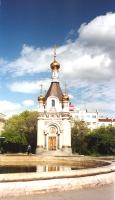 The
city was rapidly growing. In 1967 its millionth resident was born. The
city was rapidly growing. In 1967 its millionth resident was born.
On November 18, 1978 the people of Sverdlovsk celebrated the Day
of the City for the first time. Now it is a traditional popular
festival.
On September 4, 1991 the city was returned its original name -
Yekaterinburg.
|